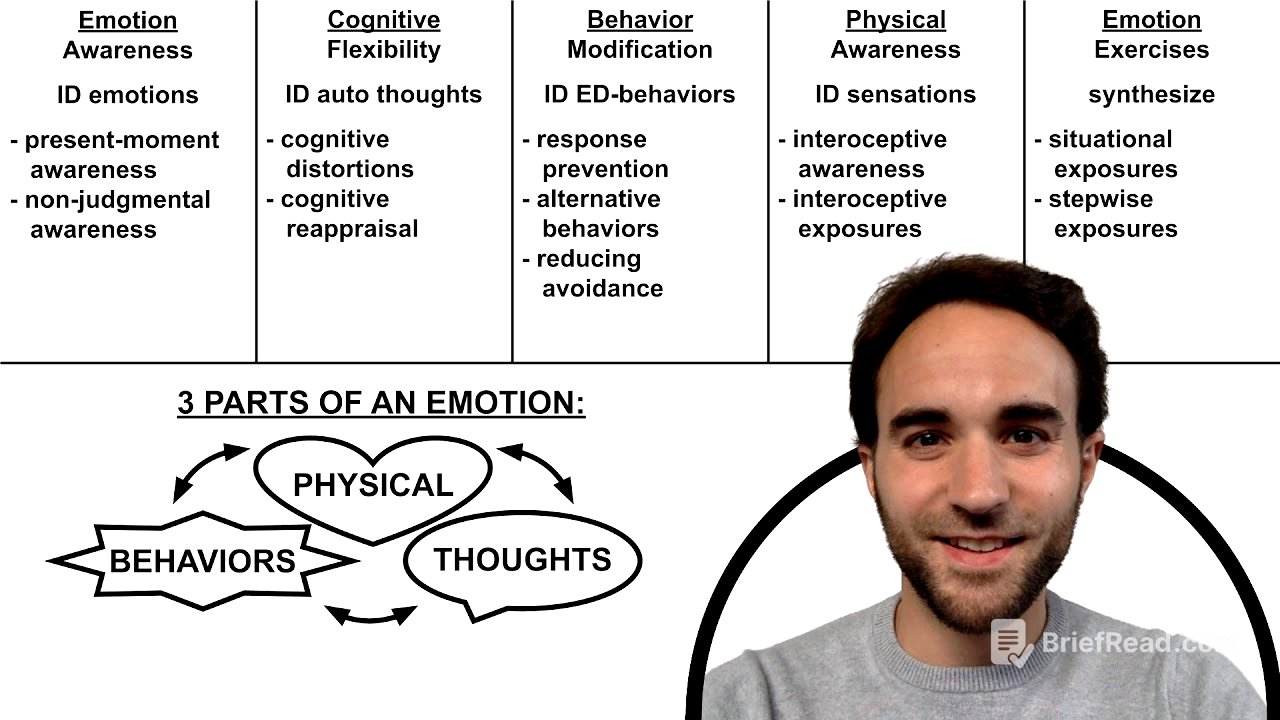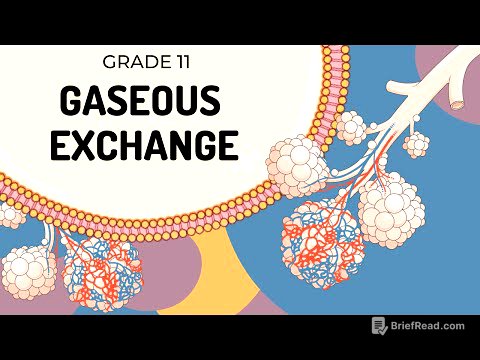TLDR;
This video provides an overview of the Unified Protocol (UP), a transdiagnostic treatment for emotional disorders. The UP is rooted in the idea that mood and anxiety disorders share a common basis: dysfunctional emotion regulation. It employs a CBT approach to enhance emotion regulation skills, irrespective of the specific diagnosis. The core principles of the UP are:
- Emotion Awareness
- Cognitive Flexibility
- Behavior Modification
- Physical Awareness
- Emotion Exercises
Introduction to the Unified Protocol [0:00]
The Unified Protocol (UP) is a therapy approach designed for the transdiagnostic treatment of emotional disorders. It operates on the principle that mood and anxiety disorders stem from the same core issue: dysfunctional emotion regulation. The UP utilizes a Cognitive Behavioral Therapy (CBT) framework to improve emotion regulation skills, making it applicable to any problem involving such dysfunction, regardless of the specific diagnosis. Studies suggest the UP is particularly effective for depressive and anxiety disorders.
Core Principles of the Unified Protocol [0:35]
The Unified Protocol is based on five core principles. These principles are emotion awareness, cognitive flexibility, behavior modification, physical awareness, and emotion exercises. These principles are detailed in the therapist guide authored by David Barlo and colleagues.
Emotion Awareness [0:50]
Emotion awareness involves learning to identify and track emotions. Patients are introduced to the three-part model of emotions, which includes thoughts, behaviors, and physical sensations. This model is similar to the CBT model, highlighting the interconnectedness of emotions, thoughts, and behaviors, but with the addition of physical sensations. Patients also learn and practice mindfulness skills, focusing on present moment awareness and non-judgmental awareness.
Cognitive Flexibility [1:31]
Cognitive flexibility involves learning to identify and track thoughts, specifically automatic thoughts. Once patients can track their automatic thoughts, they learn to evaluate them for cognitive distortions. Through cognitive reappraisal, they develop more flexible, helpful, and healthy ways of thinking.
Behavior Modification [1:52]
Behavior modification involves learning to identify and track behaviors, specifically emotion-driven behaviors (EDBs). After becoming more aware of their EDBs, patients practice response prevention, learn to engage in alternative, more adaptive behaviors, and reduce avoidance through behavioral activation.
Physical Awareness [2:11]
Physical awareness involves learning to identify physical sensations associated with emotional experiences, also known as interoceptive awareness. Interoceptive awareness refers to having awareness of internal sensations in the body, such as heartbeat, breathing, and hunger. Interoceptive exposures are emotional experiments designed to cause physical sensations associated with anxiety and psychological distress, helping patients develop tolerance to these sensations.
Emotion Exercises [2:40]
Emotion exercises involve synthesizing all the skills learned in the earlier principles and applying them to deal with real-life distressing situations through stepwise, gradual exposures. This principle integrates emotion awareness, cognitive flexibility, behavior modification, and physical awareness to manage and regulate emotions in practical scenarios.









